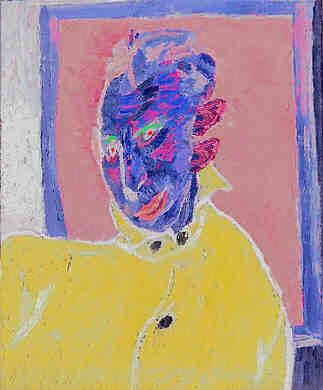Two Van Goghs stolen in latest Dutch museum heist
By The Associated Press
AMSTERDAM - Thieves broke into the main hall of the Van Gogh Museum yesterday
07 Dec 2002 and stole two early paintings by the Dutch 19th-century Impressionist
described as important works in the development of his art.
It was the second time in 10 years that the museum has been robbed, and
the second museum heist - each worth millions of dollars - in less than
a week in the Netherlands.
Museum director John Leighton said police and security guards responded
quickly to the alarms before 8 A.M., just two hours before the museum
was to open to the public. But the thieves had vanished.
"This is the worst thing that can happen to any museum," said
Leighton. One of the stolen oil paintings was the "View
of the Sea at Scheveningen," (35x51cm) a small beach scene
outside The Hague of a boat setting off into a stormy sea.
Painted over two days in 1882, the thick paint contains grains of sand
that were blown onto the canvas from beach as the artist worked. It was
among the earliest important pieces in Vincent Van Gogh's 10-year career.
Van Gogh painted this small view of the
sea using thick gobs of color and a rough brushstroke. The raging, foaming
sea, the dark, thundery sky, and the boat’s flag whipping in the
wind all give a good impression of stormy weather. Van Gogh painted this
picture on the spot, at Scheveningen, a beach resort near The Hague. He
had to fight against the elements: the gusting wind and flying sand, which
stuck to the wet paint. Most of this was later scraped off, but a few
grains can still be found in some of the paint layers.
The second was "Congregation
Leaving the Reformed Church in Nuenen," from 1884-85, a
picture of the village church in the south of the Netherlands where Van
Gogh's father had been the pastor. "The `Reform Church' was emotionally
important. He probably meant it as a souvenir for his mother," Leighton
said.
This small canvas was painted at the beginning
of 1884 for Van Gogh's mother, who had broken her thighbone in January,
but it was also partly intended for his father, for the church in the
picture is the one where his father had become pastor in 1882. X-rays
show that initially there were no human figures in the painting except
for a peasant with a spade. Later - probably not before the autumn of
1885 - the painter added the members of the congregation to the composition.
He also added autumn leaves to the original bare, wintry trees, thereby
making the canvas somewhat more colourful. It is not entirely clear why
Van Gogh overpainted a part of the scene. The woman in the centre of the
foreground, who is dressed in mourning, may provide a clue. The artist's
father died in the spring of 1885, and Van Gogh may have intended these
changes to connect the painting more closely with his dead father and
thereby to update it, as it were, for his mother.
Van Gogh, who suffered chronic depression, died in 1890 from a self-inflicted
gunshot wound when he was 37. The paintings "have no market value
since they were not for sale, but comparable paintings sold for several
million dollars," Leighton said. Neither was insured, since they
belonged to the Dutch government.
The thieves apparently scrambled up a 5-meter ladder to the second story
and in through a window. Investigators found the ladder leaning against
the rear of the building and a rope, said police spokeswoman Elly Florax.
Florax said police arrived so quickly they thought at first the thieves
might still be in the building.
It was the second high-profile heist in the Netherlands in a week. On
Monday 02 December 2002, thieves raided a diamond exhibition at the Museon
in The Hague, about 30 miles south of Amsterdam. Museum officials said
millions of dollars worth of gems were taken.
The museum, first opened in 1973 near the century-old Rijksmuseum,
has the world's largest collection of works by the Dutch painter, but
also houses the work of other leading 19th century impressionists.
Police found a broken window on a roof one story above street level,
and a 15-foot ladder leaning against the rear of the building. Forensics
officers were seen carrying away bits of glass from the window and a blanket
or large cloth that may have been used by the thieves.
The break-in was discovered before 8 a.m. Saturday, two hours before
the museum was due to open to the public.
|
 ^
Born on 07 December 1894: Stuart Davis
[self~portrait >], US Abstract painter who died 24 June
1964.
^
Born on 07 December 1894: Stuart Davis
[self~portrait >], US Abstract painter who died 24 June
1964.